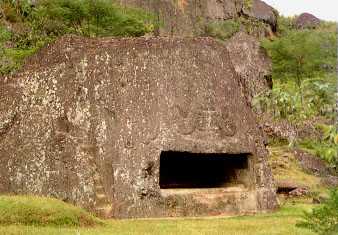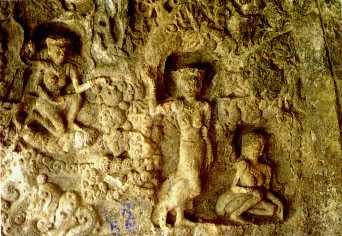
Airlangga
In A.D. 1016, King Dharmawangsa of East Java suffered a crushing defeat. According to reports preserved from the time, the whole of Java looked like a 'sea of fire'. Dharmawangsa and most of his followers were killed. The king's 16 year old son-in-law, Airlangga, however, managed to escape unharmed. Four years later, after a period of seclusion in a forest retreat, the young successor took over the throne. For the next 20 years, until his death in A.D. 1049, Airlangga endeavoured to reconquer all the territory once ruled over by his predecessor and succeeded in uniting Java and Bali. Eight years before his death, Airlangga arranged to divide his kingdom between his two sons.
The western half was called Kediri, the eastern Janggala. Contrary to Airlangga's hopes, however, these two kingdoms became bitter rivals, a condition which was to last for more than two centuries. Initially, Janggala was the more prominent, but at the turn of the 12th century Kediri came to the forefront with the appearance of semi-legendary figures like Jayabhaya, the prophet king, and Kameswara I, whose royal symbol was a fanged skull. Under Jayabhaya, East Java and beyond was re-united. According to Chinese reports, the king of Kediri in the 12th century was only second in wealth to the Caliph of Bagdad. He is said to have travelled around on an elephant, or in a carriage, surrounded by at least 500 guards. The people would all squat down and lower their heads when the king passed. The last ruler of Kediri, Kertajaya, was defeated by Ken Angrok, the founder of the dynasty of
Singosari in A.D. 1222.
Selomangleng
Cave, Tulungagung
 |
|
Selomangleng,
a scene from the Arjuna Wiwaha
 |
|
|
